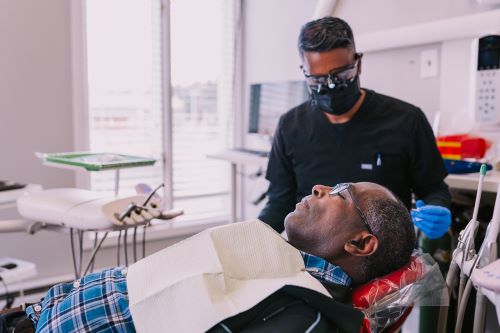Enter your email to receive the CareQuest newsletter:
February 28, 2024
From 2005 to 2020, the percentage of US dentists who identify as Black has stayed around 3.8%.
“The stagnant nature of this percentage should give us all pause,” said Eleanor Fleming, PhD, DDS, MPH. “This disparity is why having conversations like this around Black dentists, Black workforce, and issues related to the Black community are important for those of us who work in oral health.”
Fleming started that conversation as the moderator the recent CareQuest Institute of Oral Health webinar, “Examining History, Shaping the Future: Elevating Black Voices in Oral Health Care.”
Fleming is the assistant dean of equity, diversity, and inclusion at the University of Maryland School of Dentistry. She and the following speakers discussed the pressing need to increase representation and equity in dental education and practice: Caswell A. Evans Jr., DDS, MPH, emeritus professor and former associate dean for prevention and public health at the University of Illinois Chicago College of Dentistry; Nicole Cheek, DDS, the 100th president of the National Dental Association; and Jeanne Sinkford, DDS, PhD, DSc, professor and dean emeritus of Howard University College of Dentistry. The webinar was created in partnership with the National Dental Association to recognize Black History Month and spotlight the crucial contributions Black dental professionals make within their communities.
Below are just a few of the questions and shortened answers that came up during this important discussion:
What are some of the challenges Black oral health providers face when it comes to achieving oral health equity?

Evans: So much of our education for the profession is focused on teeth, and too little of it is focused on oral health. We really don’t have, in the profession, broadly defined, overt, and explicit commitment to addressing oral health inequities, achieving social justice, and ensuring that all people have adequate access to oral health services. We’re still stuck in this private practice domain, and the idea of public service suffers substantially. Social justice for oral health just does not get the attention and commitment that it should.
Sinkford: We have the haves and the have-nots. There are states that have laws that don’t allow the new models of practice for dental therapists, community health coordinators, and hygienists that have different roles depending upon how they deliver services. So, we do have inequity in our ability to provide access and licensure for individuals that could expand the pool [of oral health providers] who are providing care in those communities where they don’t have access to quality oral health care.
Can you help us understand how reports like the Gies Report affected Black communities and Black people in the oral health industry? And, how is the Gies Report still affecting Black people today?
Evans: The Gies Report was issued in the 1920s, and in the report it has a section that is entitled “The Deficiency of Dental Services for the Negro Group.” And the narrative in that chapter states rather frankly that white dentists would not be going into the segregated health system that served the Black population — to use the Gies Report language, the Negro population. Because of that segregation and that Jim Crow structure in society at the time, the report then argued that there had to be an education system to train Black dentists — again using their language Negro — or there would be no services for the Black population.
Much of that sentiment still seems to be prevalent today — that Black dentists are there to serve the Black population — because for whatever variety of reasons, dentists of other ethnicities are providing less services [to the Black population].
What can we do to ensure that dentists who do not share the same cultural experiences of patients can build trust and serve effectively in those communities?
Evans: A lot of that goes back to our education system. And we need to question, “Are we training dentists effectively in these regards?” And I think that answer is probably no. There are some dental schools that do a great job, and there are dental schools that just produce dentists.
Where are opportunities to ensure that communities can access preventive services such as sealants?

Evans: There needs to be bold change in terms of the clinical reimbursement structure and reimbursement of organizations that are prepared to remunerate for preventive services equivalent to and perhaps viewed as more valuable than destructive intervention services.
Sinkford: I think we can do better with our academic partnerships, our community outreach programs. I think we can begin using our churches and our community leaders to help us get those concepts across to people earlier and to help us with funding for the programs. You need some funding for sustained community activities, and you need to have health educators at the schools at the early levels.
What can allies and partners do to address systemic barriers to accessing oral health care?
Sinkford: Something we could do nationally and locally is institute the preventive programs in our public schools. That’s where many of our needy students are, and we could do health education and preventive treatment in our outreach programs.
Evans: Dentists and oral health people spend too much time talking among themselves and too little time talking to others. We need to be much more effective in working collaboratively with other health professional groups and less focused upon talking to ourselves and singing to the choir. We need to have a broader commitment to interprofessional collaboration leading to other health professionals recognizing their role in oral health — not their role in dentistry — and the contribution that they can make to oral health.
Check out the full conversation and the recording of the webinar in our growing library of learning opportunities.